Have you ever looked at the ingredients list in your hair products and were unable to pronounce some, or most of them? This happens because many times ingredients come listed with their scientific, or botanical name. Other times, it’s a chemical composition whose name is unpronounceable. And do you ever wonder, what do these ingredients do for your hair? Yes? Great, because today I want to explain to you what are some of the ingredients in your natural hair products and what they do.
Soon after you step into the natural hair world, and after you dig around here and there, you are overwhelmed with terminologies you have no idea what they mean like TWA (teeny weeny afro), Pree-Poo or LOC Method. With enough digging, you eventually find out what they are. However, you might feel like throwing in the towel when things get a bit more technical and “science-y”. This might be when product ingredients start to make part of your natural hair education. Things can quickly get all blurred.
This is where I jump in, to make things a bit more simple for you (hopefully). I’ll attempt to give you a private lesson on this subject. I’ll try to make things easy to understand by grouping ingredients by their function. At the same time, I will give you examples of synthetic and natural ingredients.
Surfactants
These are agents that when in contact with a liquid will create a foam that lifts dirt and grease. They can act as detergents, emulsifiers or foaming agents. You will mostly find them in your cleansers and shampoos, but you can also find them in your conditioners.
Synthetic Surfactants – They are commonly identified has sulphates/sulfates and have a bit of a bad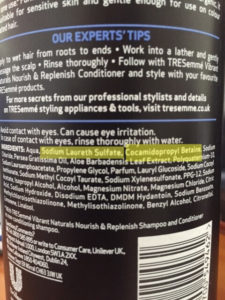 reputation because they strip the hair of natural oils (sebum) which leaves it dry. Additionally, they are also the subject of many concerns that call attention for skin irritation and toxic (carcinogenic) effects. However, there are alternatives such as sulfate-free and low-sulfate products available on the market.
reputation because they strip the hair of natural oils (sebum) which leaves it dry. Additionally, they are also the subject of many concerns that call attention for skin irritation and toxic (carcinogenic) effects. However, there are alternatives such as sulfate-free and low-sulfate products available on the market.
Examples: Sodium Lauryl/Laureth Sulphate or Ammonium Lauryl/Laureth Sulphate (SLS or MLS), Sodium Lauryl Ether Sulphate, Sodium Lauroyl Sarcosinate, Sodium Stearate, Cocamidopropyl betaine, and much more. Check this link for more examples.
Natural Surfactants – These are gentle cleansers not only for your skin but for your hair as well. They do not remove all sebum from your hair and are, therefore, less drying to your hair. They can be found in several plants species that have saponins, a substance that acts like a soap producing a foam when shaken in a liquid solution.
Examples: Soapwort, Soapnut or soapberry, ginseng or red ginseng (ginsenosides), Castille soap.
Emollients/Moisturizers
Their main purpose is to make hair (or skin) softer and to slow down water evaporation from it so it doesn’t become dry. We all know that water is the best moisturiser for our hair, however, it evaporates easily, so an oil, humectant or lubricant is needed to create an emulsion to prevent that.
Synthetic Emollients – They are substances that when applied to the hair create a film around the hair strand that softens it and prevents moisture release, which is good. However, it also makes it difficult for any moisture to get in, and over time, it can create build up around the hair strand which “suffocates” the hair. This “gunk” can only be removed with clarifying shampoos, which are more stripping than your regular shampoo. Additionally, there are also concerns that some of these ingredients cause allergies.
Examples: PEG compounds (as PEG-45), Synthetic Alcohols (have in their name butyl, cetearyl, glyceryl, isopropyl, propyl, propylene), Mineral Oil, Petrolatum, Paraffin, Silicone (dimethicone, cyclomethicone, amodimethicone, copolyol).
Natural Emollients – These ingredients are naturally found in nature and easily absorbed by the hair. Natural oils and butters, which are included in this list, can also create some form build up, however, they’ll take longer to form and won’t suffocate your hair. A clarifying wash is advisable every 6 weeks if you only use natural emollients. (Read this post to know more about clarifying natural hair).
Examples: Plant/Vegetable oils (such as Jojoba, Olive, Argan, Coconut, Grapeseed), Butters (such as Mango, Cocoa, Shea).
Humectants
I’ve talked about these before on other occasions and they are hygroscopic substances, which means substances that have the ability to attract and retain moisture by delaying its evaporation. They help to keep the hair moist and hydrated for longer.
Synthetic Humectants – Some products using these ingredients can create a film around the hair strand.
Examples: Capryl Glycol, Ethylene/Diethylene Glycol, Propylene Glycol, PEG compounds. For a more comprehensive list visit naturallycurlly.com.
Natural Humectants – Increase the hair’s level of hydration without creating a film.
Examples – Panthenol, Glycerin, Lecithin, Honey.
Emulsifiers
Emulsifiers are ingredients that have the ability to blend substances that don’t mix together, such as oil and water to create an emulsion, a substance that is able to soften/give the feeling of softer skin or hair.
Synthetic Emulsifiers – They are common by-products of petroleum/hydrocarbon, meaning they create a seal on your hair, and continued use builds up to prevent moisture absorption.
Examples: Sorbitan Stearate, PEG Compounds, Isopropyl Stearate and much more. Visit the Environmental Working Group (EWG) to type in your ingredients and discover how safe they are.
Natural Emulsifier – Can be found in nuts, berries and leaves.
Examples: Plant Waxes (Rice Bran, Candelilla, Carnauba), Lecithin, Xantum Gum.
Preservatives
They are used to protect hair products from bacteria and fungi, and extend their shelf life. They are commonly known as parabens.
Synthetic Preservatives – Considered harmless by some at current levels of exposure, parabens have lately become a concern for increased risk of breast cancer. You will find them in thousands of products, and there are now several hair product brands that offer paraben-free products.
Examples: Methylparaben, Propylparaben, Butylparaben, Ethylparaben, Benzalkonium Chloride, Methylchloroisothiazolinone, Chloromethylisothiazolinone, and more.
Natural Preservatives – When using these preservatives products’ shelf life won’t be as extended as with synthetic preservatives, however, many (including me) prefer them as there is no risk, even if minute, to develop breast cancer.
Examples: Essential Oils (such as Tea Tree or Thyme), Grape Fruit Seed Extract (antimicrobial), Antioxidants (Vitamin E, Rosemary Oil Extract).
Proteins
They are long chains of amino acids connected by peptide bonds that strengthen and provide flexibility to your hair. Because regular proteins are too big to be used, the long chain amino acids are cut at the peptide bonds through hydrolyzation. These proteins are very useful to damaged, coloured and high porosity hair because they fill in cracks and holes, strengthening the hair’s structure and softening it. This ability of proteins also makes them good humectants, as they keep your hair hydrated for longer. They can be found in shampoos, conditioners or deep conditioners, and when used as a treatment they should always be followed by a moisturising conditioner.
Synthetic Proteins – They can be chemically modified and there are concerns that some of these can cause irritation and asthma.
Examples: Cocodimonium hydroxypropyl Hydrolysed+Protein Name (such as collagen, casein or keratin), TEA-Cocoyl Hydrolysed+Protein Name (such as collagen or soy protein).
Natural Proteins – You know me, natural is always better! Nevertheless, vegetarians and vegans might have to read the label carefully as collagen, a widely used protein, is normally obtain from cattle.
 Examples: Animal (Hydrolysed Collagen, Hydrolysed Keratin). Plant (Hydrolysed Quinoa, Hydrolysed Wheat, Quinoa Seed Extract, Blue-Green Algae, Silk Protein).
Examples: Animal (Hydrolysed Collagen, Hydrolysed Keratin). Plant (Hydrolysed Quinoa, Hydrolysed Wheat, Quinoa Seed Extract, Blue-Green Algae, Silk Protein).
Don’t Stress
Phew!!! There you have it! Do you think you can grab your product container and know what each ingredient does? Don’t panic, I was just joking! This takes times to learn, I sure don’t know them all. Anyway, besides wanting to help you interpret a product’s ingredient list, I also wanted to write this article for you because we need to be aware of what is in our products and the impact they can have on our health (hair and body). It is only by making informed decisions, that we can protect ourselves.
Now, whether you go conventional, mid-term with paraben-free and free/low-sulphate, or completely natural that is your decision, but it will be an informed one. Many times we just take things out of the shelf not knowing what we are doing. I remember once, I went to buy some jelly for my kids and decided to read the label, and it said in small print that one or more ingredients could cause attention deficit! Say What!!! All I can say is be aware!
I know it is a long and boring list, but trust me that once you get familiar with some of the names in the different groups, you will be able to spot them easily. Please note that the list of ingredients is not a complete one, as it’s far too extensive and it keeps on growing. However, some of the most commonly used ones are included here. Also, know that there is more to be said about ingredients, but I will go over that as we move along in our journey. Let’s not crash our little brains all in one go!
Don’t panic thinking you will never get this. Calm down, try to compare the ingredients in your products with the ones listed here. I confess I don’t know all of them, and I couldn’t they’re too many. But I do know the ingredients I don’t want to see! It might also help you to get familiar with the ingredients on your products and compare them with other products to have a rough idea if they’ll work on my hair.
You can look for further information on these websites either by typing the name of the ingredients groups (surfactants, emollients, …) or the ingredient name. I hope this is helpful to you:


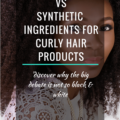
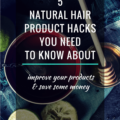
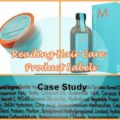
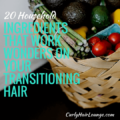

10 thoughts on “Natural Hair Product Ingredients – What’s In Them?”
Synthetic shampoos are really bad for our hair. We should go natural or else we’ll be going bald!
Hi Keye, that’s very funny! I hope it doesn’t get to that.
Natural hair product ingredients is definitely an article ill share with my daughter, you describe things so well. This helpful thanks.
Thank you Vic!
I think that the things you could eat is what you should use in your hair. All natural, safe ingredients is what I am after. I confess though, I don’t always stick to it.
When I start to read ingredients in hair products my eyes go wonky lol I had no idea what many of the ingredients meant. Thanks for shedding some light on those big words!
Thanks for taking the time to explain some things in a more understandable way. 🙂
Mary
Hi Mary, yes reading the ingredients list can make your eyes go wonky! Ahahah! I also prefer the natural root, but I agree with you sometimes it’s not always possible. Maybe just sticking to paraben-free and/or sulphate-free is easier to start with, it normally stands out in the package.
Wow, there’s so much to think about when you go shopping for beauty products… I didn’t even realise!! Thanks for this post, I’ll try to be more mindful about what I’m buying in the future!!
Hello Zoe, It does feel like a lot, doesn’t it? It felt like that to me too, but once you get used to it and find the products you like is easy peasy lemon squeezy!
Hi Monica! Haha, I feel like I was the only person actually interested and familiar with these ingredients. You really summarized it well! This is a definite keep-bookmarked-while-shopping reference guide.
The only thing I can say is that I disagree with you about parabens. http://www.paulaschoice.com/expert-advice/myths/_/parabens-are-they-really-a-problem (I am not affiliated with them in any way) is a great summary of how parabens have been given a bad rep because of marketing by “natural” companies.
With scientific citations, she states, “Ironically, parabens are naturally occurring chemicals. It’s ironic because many natural skin-care brands claim ingredients like parabens are dangerous, when in fact parabens have exhaustive safety data AND are naturally produced by vegetables and fruits. Foods such as soy, beans, flax, cherries, blueberries, carrots, and cucumbers produce parabens and other chemicals that mimic estrogen—to a much greater degree than the miniscule amounts of parabens used in skin care, hair care, and makeup.
Despite this fact, when was the last time you read a media report or received a forwarded e-mail about the breast cancer risk from cucumbers, beans or berries? In contrast, you’ve likely seen media reports or emails regarding parabens and their link to estrogenic activity. The truth is that on a global scale, there is an exhaustive degree of scientific and medical studies demonstrating the safety of parabens used in skin care and cosmetics. So the next time you read a story that vaguely indicates parabens are unsafe, think twice before you believe the hype and remember the facts–the tiny levels used in your personal care products are not harmful.”
Hi Lauren!
Thanks for your view on this subject. I believe it is a difficult discussion. I for once prefer to have the least possible synthetic chemicals in my life. I have read that article and a few others. Yes it is true that parabens are present in many other products we use regularly, just as SLS are too (such as body creams, toothpaste, etc).
I have studied/performed scientific research and the truth is that for every study saying this is good, there will be another one reporting the opposite. You can’t deny too, that many studies are sponsored by the same companies that want you to buy their products with the so called “bad” chemicals.
Yes, many vegetables and fruits also produce parabens. I can argue that these are much better than the synthetic ones, because they are natural and therefore more easily recognised and “processed” by our bodies causing less (if any) damage.
I find that there is a great increase in diseases such as cancer and allergies, and for me this is connected to the use of synthetic chemicals in our lives in the products we use and eat. Yes, studies may say “this shampoo, or this food has minuscule amounts of exposure, and therefore is safe to use”. However, you use the shampoo, the body cream, the toothpaste, you eat the muffin, you drink the wine and it all adds up over the course of years because you and me have been brought consuming these without any thought. Sure cancer has always been here and it existed in our grandparents time. However, it was an “old peoples disease” (could it be because of less exposure?!?) and today we see it in younger people and children more often.
The truth is, you can never be truly rid of these “bad chemicals”. Our fruit and vegetables are full of pesticides which are not good for us in any way, and form another part of the problem. The best thing is to go organic, I think! There is no use of pesticides even though our grounds may be contaminated in some way (previous use of pesticides, or water contamination in the soils, etc). Lets choose the lesser evil. This is a difficult discussion, and maybe one I will have here. We need to stop following the herd and make our own decision of what is best for us. I for once prefer to have minimal exposure to them in my life and kids life.
I say go organic and use natural ingredients!
Thanks Lauren for this discussion!